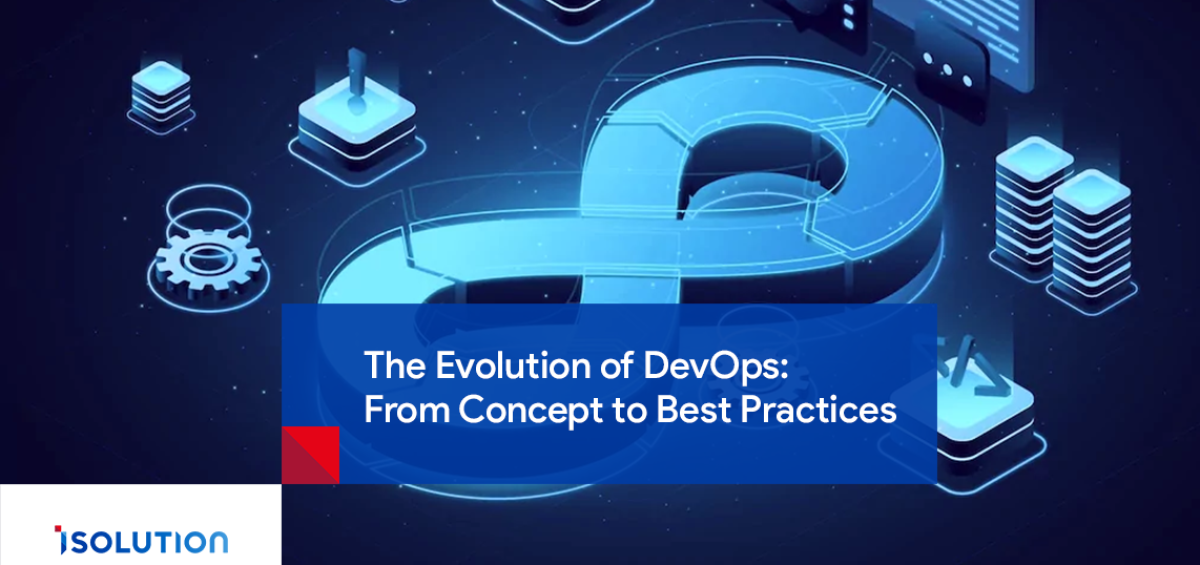In the world of software development, where the demand for rapid delivery and high-quality products is ever-increasing, the emergence of DevOps has revolutionized the industry. DevOps, a blend of “development” and “operations,” represents a set of practices that aims to bridge the gap between software development and IT operations.
In this article, we will delve into the evolution of DevOps from its inception, explore best practices, examine the benefits of its adoption, and discuss its future.
The Birth of DevOps
The roots of DevOps can be traced back to the Agile software development movement in the early 2000s. It emphasized iterative development, collaboration, and customer feedback but needed to fully address the operational challenges of deploying and maintaining software. The term “DevOps” was first coined in 2009 by Patrick Debois, who sought to extend Agile principles to IT operations. The first DevOpsDays conference in Ghent, Belgium, marked the formal inception of the DevOps movement.
The Evolution of DevOps
-
Early Adoption (2009-2013)
In its infancy, DevOps was primarily adopted by tech giants and startups looking to streamline their development and deployment processes. Companies like Flickr and Etsy were pioneers, showcasing the benefits of continuous integration and continuous delivery (CI/CD). During this period, the focus was on automating repetitive tasks, reducing manual intervention, and fostering a culture of collaboration.
-
Mainstream Acceptance (2014-2017)
As success stories from early adopters spread, more organizations began embracing DevOps. A survey by Puppet Labs in 2017 revealed that high-performing IT organizations deploying DevOps practices deployed code 46 times more frequently than their low-performing peers. The rise of containerization technologies like Docker and orchestration tools like Kubernetes further pushed DevOps adoption, making managing and scaling applications easier.
-
Maturity and Standardization (2018-Present)
Today, DevOps has become a standard practice across various industries, from finance to healthcare. According to Puppet’s 2020 State of DevOps Report, 55% of respondents have adopted DevOps practices. The focus has shifted from merely automating tasks to optimizing the entire software delivery lifecycle. Organizations now emphasize metrics, security, and continuous improvement.
Best Practices in DevOps
-
Automation
Automation is at the core of DevOps. Automating repetitive tasks such as testing, deployment, and infrastructure provisioning reduces errors and accelerates delivery. For example, Netflix uses Spinnaker, an open-source multi-cloud continuous delivery platform, to automate its deployment pipeline, enabling hundreds of daily deployments.
-
CI/CD
Continuous Integration and Continuous Delivery (CI/CD) are fundamental to DevOps. CI integrates code changes frequently with automated testing to detect issues early. CD ensures that code changes are automatically deployed to production. Companies like Google have perfected CI/CD, deploying thousands of updates daily without disrupting user experience.
-
Infrastructure as Code (IaC)
Iac allows the managing and provisioning of computing infrastructure through code rather than manual processes. Tools like Terraform and AWS Cloud Formation enable teams to define and manage infrastructure in a declarative manner. This approach ensures consistency and facilitates disaster recovery.
-
Monitoring and Logging
Continuous monitoring and logging are crucial for maintaining system health and performance. Tools like Prometheus, Grafana, and ELK Stack (Elasticsearch, Logstash, Kibana) help teams gain insights into system behavior, detect irregularities, and respond to incidents swiftly.
-
Collaboration and Culture
DevOps is not just about tools and processes; it’s about fostering a culture of collaboration and shared responsibility. Encouraging cross-functional teams to work together and share knowledge enhances innovation and productivity. Atlassian, the maker of Jira and Confluence, emphasizes a strong DevOps culture, promoting transparency and teamwork.
Benefits of DevOps Adoption Practices
Organizations that adopt DevOps practices enjoy numerous benefits, including:
-
Faster Software Delivery Cycles
Enhanced speed and efficiency in bringing new features and updates to the market.
-
Improved Software Quality
Higher quality and more reliable software outputs due to continuous testing and feedback.
-
Increased Agility and Responsiveness
Quicker response to market changes and customer needs.
-
Reduced Costs
Decreased overhead through automated processes and improved operational efficiency.
The Modern DevOps Landscape
The Evolution of DevOps showed a comprehensive set of practices and principles extending beyond development and operations. Some key trends and best practices in modern DevOps include:
-
DevSecOps
Integrating security into the DevOps pipeline, ensuring that security is not a backup but an integral part of the development process.
-
Microservices and Containers
Using containerization and microservices architecture to build scalable and portable applications.
-
Serverless Computing
Leveraging serverless platforms to abstract away infrastructure management, allowing developers to focus on code.
-
AI and Machine Learning
Integrating AI and ML into DevOps processes for predictive analytics, abnormality detection, and automation.
In conclusion, the evolution of DevOps represents an ongoing journey toward enhanced collaboration, speed, and quality in software development. As technology and markets evolve, so will DevOps practices, which will increasingly incorporate AI and machine learning to predict errors, optimize processes, and improve decision-making. Organizations must stay updated with these practices and integrate them into their operational strategies to maintain efficiency and competitiveness in today’s fast-paced digital economy. By adhering to DevOps’s core principles and best practices, companies can expect to achieve greater agility, improved performance, and, ultimately, higher customer satisfaction.







Leave a Comment